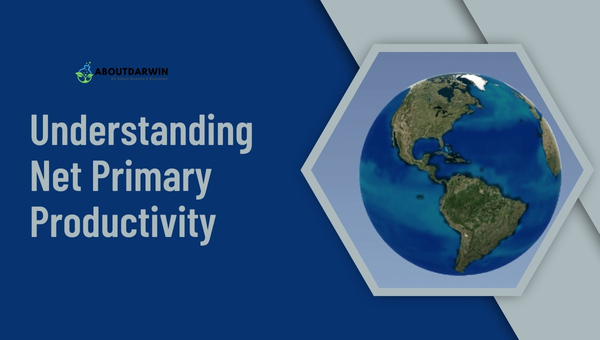Physical Address
304 North Cardinal St.
Dorchester Center, MA 02124
When talking about our planet’s well-being, Net Primary Productivity (NPP) is an important term to understand. Simply put, NPP measures the total amount of organic matter produced by plants minus the energy used during plant respiration.
It’s a way to determine the balance between the total amount of carbon that plants absorb through photosynthesis and the amount released during respiration.
Essentially, NPP is an indicator of the Earth’s capacity to support life, both in plant growth and for the many organisms that rely on plants for energy. Higher NPP values signify more abundant and diverse ecosystems, whereas lower values might suggest compromised ecosystems or unsustainable conditions for some life forms.
Monitoring NPP is essential for understanding long-term trends in global ecosystems and the impacts of climate change on forests, agriculture, and other environments. By evaluating NPP, we can more effectively preserve our planet, conserve its resources, and protect its biodiversity.
Contents
Let me explain net primary productivity (NPP) and its importance for our planet. NPP is the rate at which plants in an ecosystem convert light energy from the sun into chemical energy through photosynthesis minus the energy they consume during cellular respiration.

In simpler terms, it represents the overall energy produced by plants, which serves as the foundation of food chains within ecosystems.
It’s essential to monitor NPP levels for a variety of reasons:
Various factors influence NPP, such as climate, availability of sunlight, water, and nutrients. When assessing NPP, there are two main components:
To calculate NPP, the formula used is:
Net Primary Productivity (NPP) = Gross Primary Productivity (GPP) – Plant Respiration (R)
Using this formula, scientists can accurately determine an ecosystem’s NPP levels. Some key data about global NPP include:
Let’s take a look at some NPP data from various ecosystems in a table:
| Ecosystem | NPP (grams/m²/year) |
|---|---|
| Tropical rainforest | 2,200 |
| Temperate deciduous forest | 1,200 |
| Grassland | 900 |
| Boreal forest | 800 |
| Tundra | 140 |
Ecosystems with high NPP, like tropical rainforests, usually have higher biodiversity, while those with lower NPP, such as tundra, support fewer species. By examining NPP levels across ecosystems, we can better comprehend the overall health of our planet and make more informed decisions regarding conservation efforts and environmental management.
Net Primary Productivity, or NPP, is a vital measure of the total amount of organic carbon generated by the Earth’s ecosystems through photosynthesis.

It plays a crucial role in determining the overall health of our planet, as it directly impacts the availability of resources and the capacity of ecosystems to support life. In this section, I’ll delve deeper into the global significance of NPP, exploring its importance about climate change, ecosystem functioning, and human activities.
Firstly, NPP has substantial implications for climate change. Since it indicates how much carbon dioxide (CO₂) is removed from the atmosphere through photosynthesis, NPP contributes to regulating Earth’s carbon cycle.
A higher NPP value equates to more carbon sequestered, which can help mitigate the impacts of climate change. Fluctuations in NPP could signal changes in climate patterns, alerting us to issues requiring further investigation and action.
Additionally, NPP has a significant impact on the overall functioning of ecosystems. It reflects the amount of energy available for life across the planet as plants and other autotrophs convert sunlight into usable energy for growth and reproduction.
This energy is then transferred up the food chain to herbivores, carnivores, and decomposers, ultimately shaping ecosystems on both local and global scales.
Here are some facts related to global NPP values:
| Region | NPP (gC m−2 yr−1) |
|---|---|
| Oceania | 900 – 2000 |
| Eurasia | 500 – 2000 |
| Africa | 500 – 2000 |
| North America | 500 – 2000 |
| South America | 500 – 2000 |
Source: Field, C. B., Randerson, J. T., & Malmström, C. M. (1995). Global Net Primary Production: Combining Ecology and Remote Sensing. Remote Sensing of Environment, 51(1), 74-88.
Finally, human activities considerably impact NPP, both directly and indirectly. Land use changes, such as deforestation, can significantly alter the productivity of ecosystems, reducing their capacity to capture carbon and support life.
Likewise, using fertilizers and other agricultural practices can enhance NPP in managed ecosystems, increasing carbon sequestration and productivity.
The global significance of Net Primary Productivity spans from its role in regulating climate change to shaping ecosystems and reflecting the impact of human activities. Understanding NPP and working towards its conservation is crucial for maintaining the balance of life on Earth and the overall health of our planet.
Understanding the Net Primary Productivity (NPP) of our planet helps us gauge the overall health and balance of Earth’s ecosystems. This key metric captures the energy plants and photosynthesizing organisms produce, which sustains life on Earth. Let’s recap the essential points we’ve discussed in this article.
Monitoring Earth’s NPP proves crucial in preserving our ecosystems and maintaining environmental balance. By making conscious, informed decisions about resource use and land management, we can help conserve Earth’s precious habitats and, in turn, support the planet’s net primary productivity.
Only by understanding the intricate balance of NPP and its relation to the biosphere can we ensure a sustainable future for generations to come.